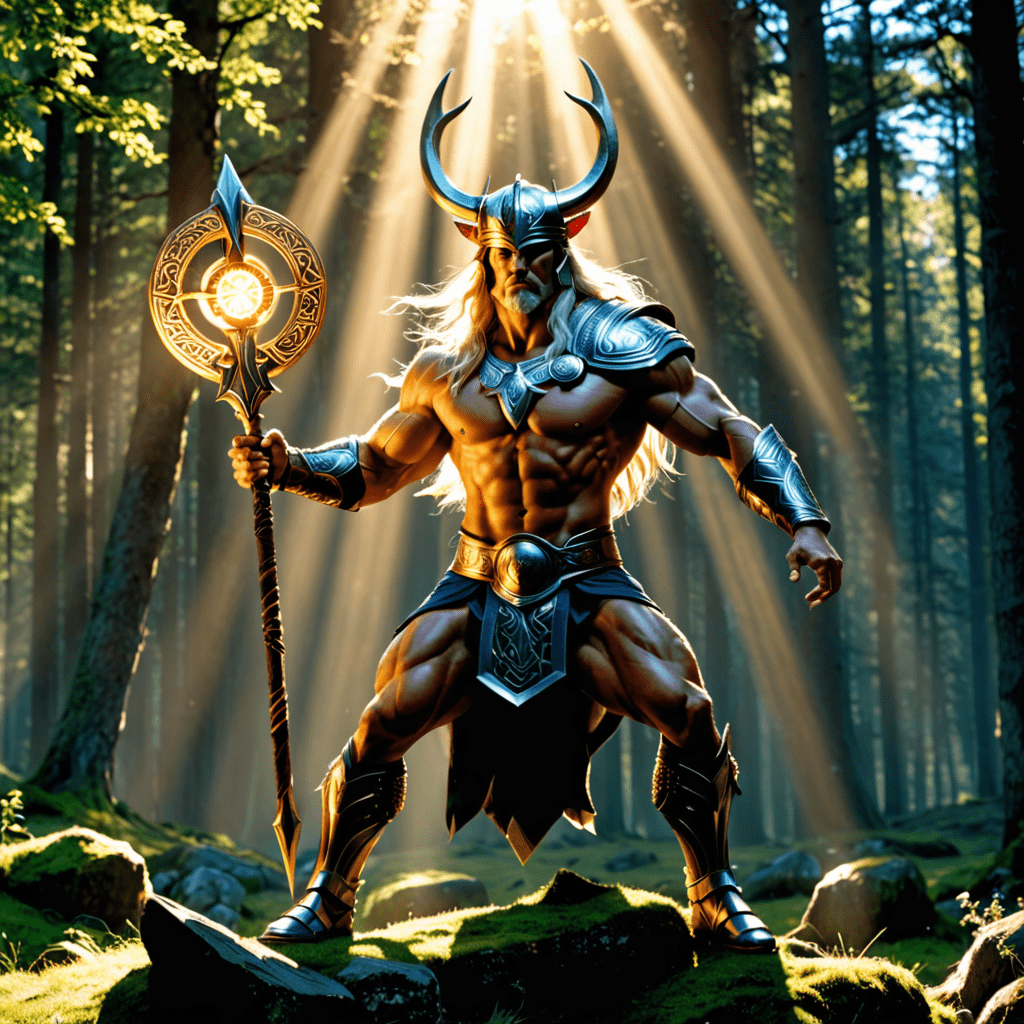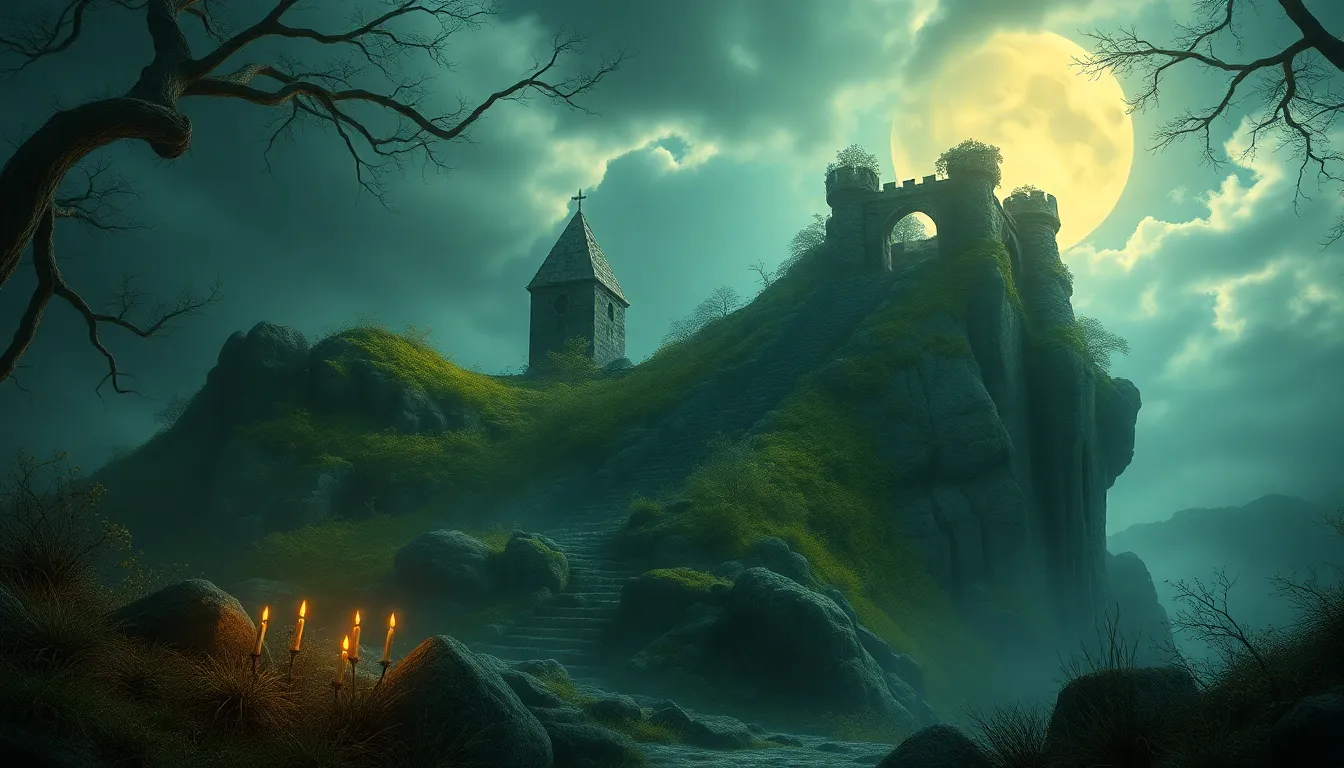The Summit of the Forgotten: Legends of Mountains Lost to Time
I. Introduction
The term “Forgotten Mountains” refers to those majestic peaks that have faded from collective memory, shrouded in mystery and myth. These mountains often serve as the backdrop for legends that encapsulate the essence of human experience, symbolizing both challenge and aspiration.
Mountains have played a significant role in various mythologies and cultures around the world. They are often seen as places where the earthly meets the divine, acting as a bridge between humanity and the gods. This article explores the fascinating intersection of geography, mythology, and culture, shedding light on the themes and stories linked to these enigmatic heights.
II. Historical Context of Mountain Legends
Throughout history, ancient civilizations have woven intricate tales around mountains, often attributing divine qualities to these natural giants. The legends surrounding them have evolved, influenced by cultural exchanges, geographical factors, and the passage of time.
A. Ancient Civilizations and Their Mountain Myths
Many ancient societies revered mountains as sacred sites. For instance:
- The Greeks saw Mount Olympus as the home of their gods.
- In Hinduism, Mount Meru is considered the center of the universe.
- In Native American cultures, peaks like Mount Shasta are viewed as powerful spiritual sites.
B. The Role of Geography in Shaping Legends
The unique geographical features of mountains—such as their height, isolation, and treacherous terrains—have inspired countless myths. These natural barriers often acted as boundaries between different cultures, leading to diverse interpretations of the same peaks.
C. The Evolution of Mountain Folklore Over Time
As societies evolved, so did their narratives surrounding mountains. The industrial revolution, urbanization, and globalization have transformed these ancient tales into modern stories, often romanticized or commodified for contemporary audiences.
III. The Enigmatic Peaks: Notable Forgotten Mountains
Some mountains have become legendary, representing more than just their physical forms. Here are a few notable examples:
A. Mount Roraima: The Lost World
Rising dramatically from the rainforests of Venezuela, Mount Roraima is often referred to as the “Lost World.” Its flat-topped summit has inspired stories of hidden creatures and undiscovered species, reflecting the deep human desire for exploration and the unknown.
B. The Mythical Olympus: Beyond the Greek Pantheon
While Mount Olympus is well-known as the dwelling place of the Greek gods, its significance extends beyond mythology. It symbolizes the heights of human ambition and the pursuit of knowledge, echoing themes of divine inspiration.
C. The Mysterious Mount Meru: A Cosmic Center in Hindu Mythology
In Hindu cosmology, Mount Meru is seen as the axis of the universe, a sacred mountain that connects the earth with the heavens. Its portrayal in various texts and traditions highlights the spiritual connection humans have with nature.
IV. The Guardians of Forgotten Mountains: Mythical Creatures
Mythical creatures often inhabit the legends of forgotten mountains, serving as both protectors and challengers to adventurers. These beings enrich the narratives, adding layers of complexity to mountain folklore.
A. Dragons and Serpents: Protectors of Sacred Peaks
In many cultures, dragons and serpents are depicted as guardians of sacred mountains. These creatures symbolize the dual nature of nature itself—both destructive and protective.
B. Spirits and Deities: The Divine Watchers of the Summits
Mountains are often associated with deities or spirits that watch over the land. For example, the Inca worshipped the Apus, mountain spirits believed to protect their communities.
C. Folktales of Adventurers and Their Encounters with the Supernatural
Numerous folktales recount the experiences of adventurers who encounter these mythical creatures, illustrating the challenges posed by nature and the supernatural. Such stories serve as cautionary tales about respect for the natural world.
V. The Intersection of Geography and Legend
The relationship between geography and legend is profound, as natural features inspire myths and shape cultural narratives.
A. How Natural Features Inspire Myths
Mountains often possess unique characteristics—such as their height, shape, or isolation—that influence the stories told about them. These features can lead to the creation of myths that reflect human emotions and experiences.
B. The Role of Climate and Weather in Shaping Stories
The harsh climates of mountainous regions contribute to the mystique surrounding them. Storms, fog, and sudden weather changes can create an atmosphere ripe for storytelling, often leading to tales of lost travelers or divine intervention.
C. Mapping the Legends: Geographic Locations of Forgotten Mountains
Understanding the geographic locations of these mountains can help us appreciate the cultural narratives associated with them. Many forgotten mountains are linked to specific regions and peoples, showcasing the diversity of human experience.
VI. Cultural Significance of Mountain Legends
Mountains are rich in symbolism, representing challenges, aspirations, and cultural identity.
A. Mountains as Symbols of Challenge and Perseverance
Climbing a mountain is often seen as a metaphor for overcoming obstacles in life. This symbolism is prevalent in various cultures, reinforcing the idea of perseverance against adversity.
B. Influence of Mountain Myths on Art, Literature, and Music
Mountain legends have significantly influenced art, literature, and music. From romantic poetry to epic tales, the imagery of mountains continues to inspire creativity across various mediums.
C. The Role of Mountains in Shaping National Identities
Mountains often serve as symbols of national pride and identity. Countries may adopt their iconic peaks as emblems, reflecting a collective cultural heritage and unity.
VII. Modern Explorations and Rediscoveries
The age of exploration continues with modern expeditions seeking to rediscover forgotten mountains and their legends.
A. Expeditions to Forgotten Peaks: A New Era of Discovery
Adventurers and researchers are increasingly drawn to forgotten mountains, seeking to uncover their secrets and understand their historical significance.
B. The Impact of Technology on Mountain Exploration
Advancements in technology, such as satellite imagery and drones, have revolutionized how we explore and document these remote areas, providing new insights into their ecology and cultural significance.
C. How Modern Science is Unraveling Ancient Myths
Scientific research is helping to validate and debunk various mountain legends, blending ancient folklore with contemporary understanding of geography and ecology.
VIII. The Environmental Perspective: Forgotten Mountains Today
Forgotten mountains are not just relics of the past; they are vital ecosystems facing modern challenges.
A. The Ecological Importance of Mountain Ecosystems
Mountain ecosystems are crucial for biodiversity, water supply, and climate regulation. They serve as habitats for numerous species and are essential for environmental health.
B. Threats to Forgotten Mountains: Climate Change and Human Activity
Climate change and human encroachment pose significant threats to these ecosystems. Deforestation, mining, and tourism can lead to habitat destruction and loss of biodiversity.
C. Conservation Efforts and the Preservation of Mountain Legends
Efforts to conserve these areas are vital not only for ecological reasons but also for preserving the cultural legends associated with them. Initiatives aim to balance human activity with environmental protection.
IX. The Legacy of Forgotten Mountains in Contemporary Culture
The fascination with forgotten mountains persists in contemporary culture, reflecting a resurgence of interest in their myths and stories.
A. The Resurgence of Interest in Mountain Myths
As more people seek connection with nature, there is a growing interest in the




